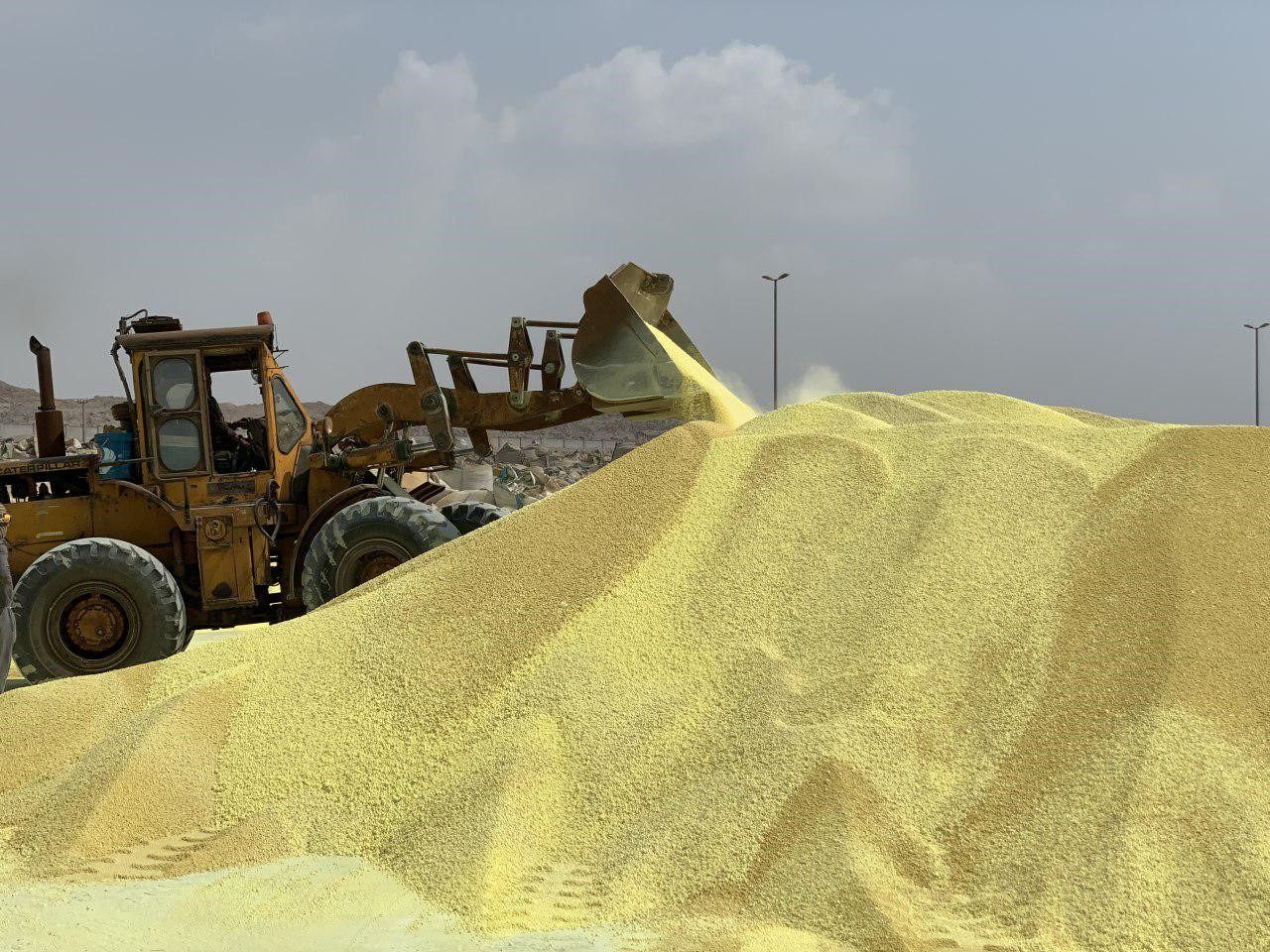The Importance of Sulfur for Plants
April 29, 2025
Sulfur is essential for the health and growth of plants at several key stages of development. This element plays a vital role in the development of proteins and chlorophyll in plants. Chlorophyll in leaves converts sunlight into energy and reacts with nutrients to create food for plant growth. The use of sulfur fertilizers helps produce necessary enzymes and proteins in plants. When added to soil, sulfur can also reduce pH levels and sodium content.
Nutritional Value of Sulfur:
- Improves the oil percentage in oilseeds
- Increases protein content in seeds
- Enhances the cooking and milling quality of grains
- Boosts the nutritional value of forage
- Responsible for the aroma and flavor of certain vegetables in the cabbage family
- Improves plant resistance to cold and diseases
The need for sulfur fertilizers is closely linked to nitrogen, as both are components of proteins and play a role in chlorophyll formation. They are also involved in converting nitrate into amino acids. Crops with high nitrogen requirements typically also need high sulfur levels. Sulfur fertilizers are among the best for onions and garlic, enhancing their flavor.
Most sulfur in soils is present in organic matter, which must be converted into the mineral sulfate anion before being absorbed by crops. The decomposition of organic matter and the release of sulfur depend on temperature and moisture. Generally, conditions favoring crop growth also promote mineralization and release, though this may be less likely in cold-season crops.
Sulfur Fertilizers
Sulfur-rich fertilizers not only aid crop growth but also improve the efficiency of other nutrients and growth factors. Sulfur fertilizers can enhance plant quality and yield, leading to economic benefits for farmers. Sulfur provides a quick and easy way to adjust soil pH and supply this essential mineral to plants. The application of sulfur fertilizers typically maintains adequate sulfur levels for up to a year. When deciding to use sulfur fertilizers, several factors must be considered, including crop goals, soil and plant analysis, organic matter content, soil texture, and contributions from other sources like irrigation.
The use of powdered sulfur fertilizers goes beyond nutrient supply; they can also serve as fungicides and pesticides. Often used as soil amendments, sulfur’s strong acidic effect helps replace sodium with calcium in alkaline soils with high pH. However, before plants can utilize it, sulfur must be oxidized into sulfate. Sulfur seems like a magical solution for gardening, with its wide range of applications making it a favorite among gardeners. Uses of sulfur fertilizers include:
- Enhancing plant growth
- Reducing sodium levels in soil
- Adding flavor to vegetables
- Acting as a fungicide and pesticide
- Acidifying soil
Types of Sulfur Fertilizers
With numerous sulfur-containing fertilizers available in the market, choosing the best option can be challenging for farmers. Many sulfur fertilizers contain sulfate in a form readily absorbed by plants, but this type is prone to leaching. Other options include bisulfites, thiosulfates, and polysulfides. The most common insoluble sulfur fertilizer is elemental sulfur, which must be oxidized into sulfate before plants can use it, making it available over time. For easy oxidation and high solubility, elemental sulfur must be finely ground to be effective within the same growing season.
Sulfur is also included in a wide range of chemical fertilizers, such as:
- Potassium sulfate
- NPK fertilizers
- Ammonium sulfate
- Organic matter
- Phosphoric fertilizers
- Gypsum or calcium sulfate
A good sulfur fertilizer should dissolve quickly, though sulfur fertilizers vary in solubility. For example, ammonium sulfate and liquid sulfur fertilizers are highly soluble.
Ammonium thiosulfate (ATS) is the most common sulfur source used in liquid fertilizers. After application, thiosulfate decomposes, yielding roughly equal amounts of sulfate sulfur and elemental sulfur. Since this fertilizer also contains ammonium nitrogen, it has a high salt effect on seeds and should not be placed near seeds during pre-planting applications.
Calcium sulfate (gypsum) contains 15–18% sulfur. It is found in ordinary superphosphate and is a byproduct of concentrated superphosphate production. Gypsum is an effective sulfur source but is not a popular choice due to its low sulfur content.
Other sulfur sources include fertilizers produced as nitrogen, phosphorus, or potassium fertilizers, such as nitrogen-sulfur materials like ammonium sulfate, ammonium nitrate-sulfate, ammonium phosphate-sulfate, and ammonium phosphate-nitrate. Potassium-sulfur fertilizers include potassium sulfate and potassium magnesium sulfate. Sulfur fertilizers may also carry micronutrients like ZnSO4 and FeSO4.
How to Fertilize Plants with Sulfur
All plants require sulfur for growth, so sulfur fertilizers can be used if soil sulfur levels are low. Sulfur deficiency in soil limits plants’ ability to absorb and use other essential minerals like phosphorus, nitrogen, and potassium. Plants can only absorb and utilize sulfur in the sulfate form. Using sulfate-containing fertilizers like ammonium sulfate ensures sulfur is immediately available upon dissolution. Thiosulfate-containing fertilizers require an additional step to become plant-available. Under normal growing conditions, most thiosulfate-applied sulfur becomes available within weeks. Elemental sulfur fertilizers must undergo biological conversion to sulfate, with the speed of this process heavily dependent on climate. Generally, about half of the elemental sulfur is estimated to become available during the growing season.


Leave a comment